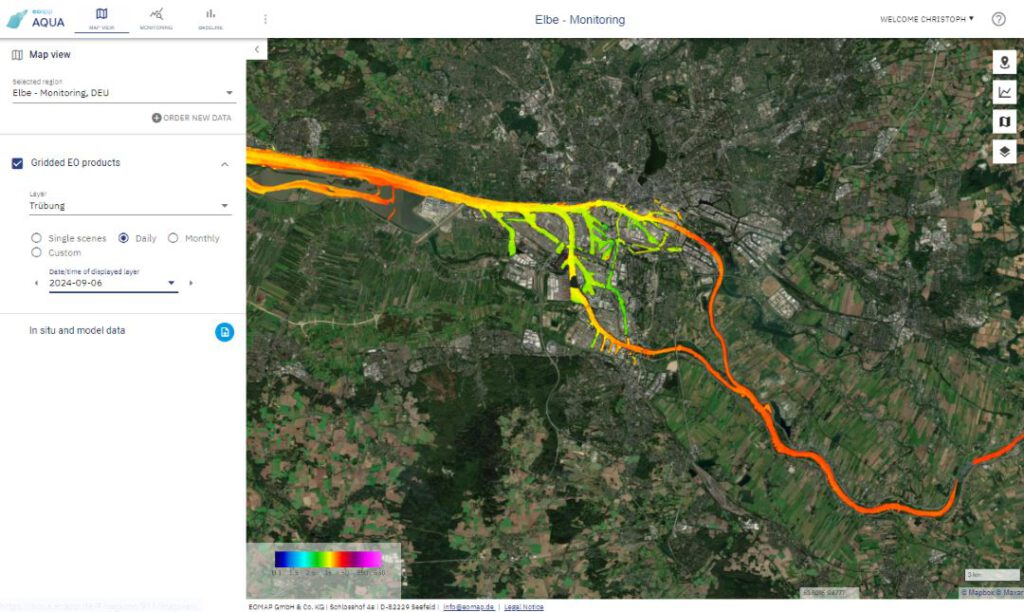ABOUT THE PROJECT
Identifying impact factors for lack of oxygen and biodiversity loss on rivers is challenging. River basins are complex and dynamic ecosystems.
TESA aims to provide new insights into these riverine ecosystems by the example of the Elbe River: The German research project led by the Elbe River Basin Community (FGG Elbe) focuses on the temporary lack of oxygen in the tidal Elbe during summer and dives deep into its causes. The issue has supra-regional implications for many stakeholders along the Elbe River basin. EOMAP contributes to the project with water quality analyses using its online solution eoapp AQUA.
Why oxygen levels matter
Low-oxygen zones in rivers are harmful to existing fish population and the ecosystem’s biodiversity. Furthermore, these zones pose a barrier for migratory fish and lamprey species. As part of their life cycle, these fish depend upon migrating from the sea into the flowing waters of the entire Elbe River catchment including the Hamburg harbour area. The “oxygen valley” is a result of hydromorphological changes caused by human interventions, such as bank protection, port expansion, and flood protection measures, along with nutrient enrichment and algal biomass buildup in the Middle Elbe.
How we contribute
EOMAP is contributing to the project
- by retrospective data analysis to reveal trends in water quality evolution, applying eoapp AQUA.
- Until April 2025, we continue monitoring various water quality parameters such as turbidity, inorganic absorptions, Chlorophyll or yellow substances, in near real-time.
- For this purpose, we process data of 3 x 3 m high resolution Planet SuperDove sensors with daily repetition rates.
The research target
The screenshot taken from eoapp AQUA below shows turbidity levels on the Elbe River around the port of Hamburg. The orange colour indicates high turbidity levels in the tidal zones as well as in the middle parts of the river and a reduced turbidity in the harbour area. Correlating these data with oxygen levels measured by in situ campaigns might help introduce earth observation (EO) measurements as proxy parameters. We hope to unveil oxygen level patterns associated with changes in water quality parameters, which will finally generate a deep understanding of oxygen deficiency situations in the river system.
The Elbe River Basin Community (FGG) is a group of experts from German federal institutions and state authorities. It coordinates and harmonises the management of water bodies and flood risks of the Elbe River basin on national and international levels, aligning with the Water Framework Directive (WFD) of the European Commission.
For more details, please get in touch with the water quality team.
MEDIA

SUMMARY
Flussgebietsgemeinschaft Elbe (FGG Elbe), Helmholtz-Zentrum Hereon and BfG I Bundesanstalt für Gewässerkunde
Research project
Water Quality, eoapp AQUA
LINKS
More on river monitoring:
Starving the Mekong – a REUTERS story supported by EOMAP
Investigations on the Oder fish kill